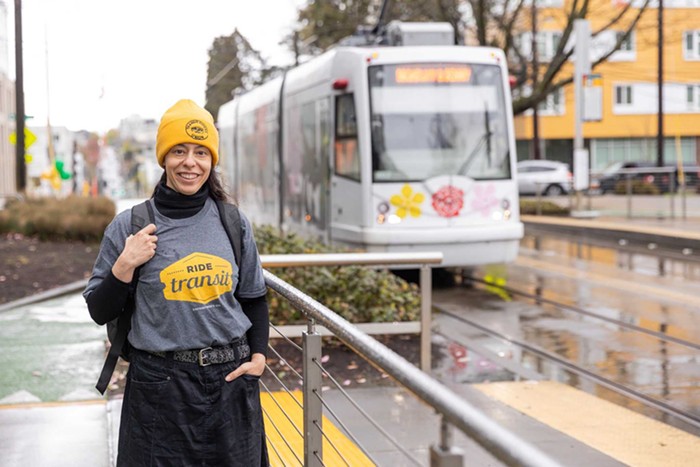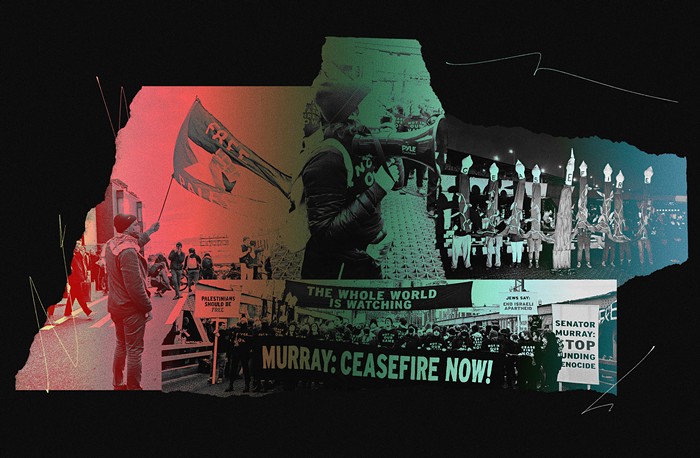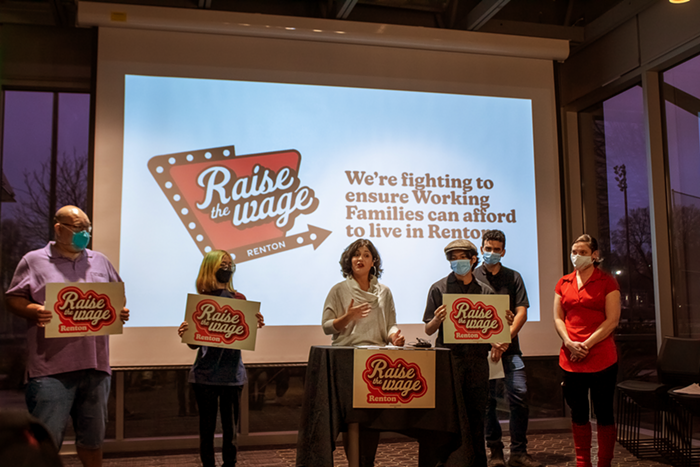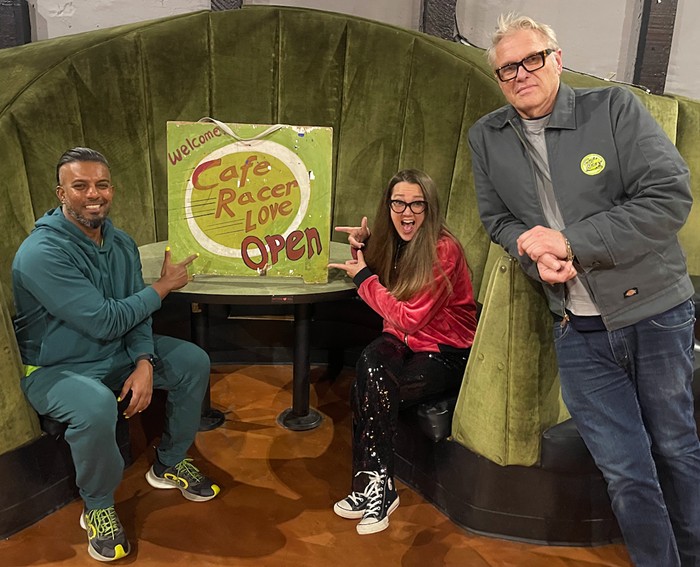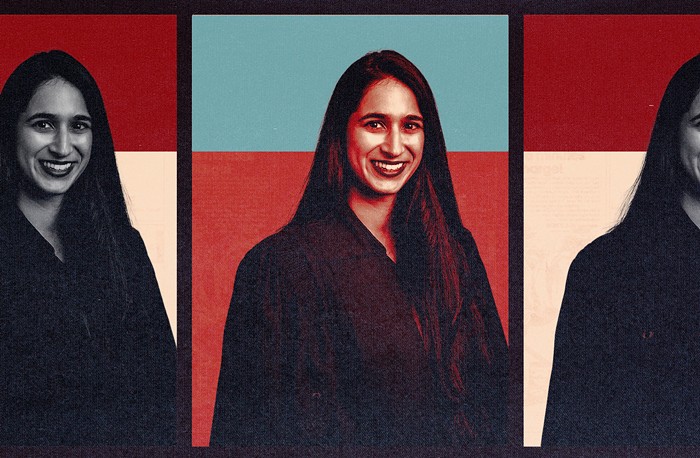To find good skating on a rainy day, get in your car and drive 15 miles south from Seattle on I-5. Then head on I-405 toward Renton, turn onto WA 181, take a right on Lind Avenue, and there you'll find it: one of Kent's (total population: 80,000) three skateparks. In Seattle's suburbs and other Northwest cities, skateparks are decades-old, well-accepted institutions. In Seattle proper, 20,500 skaters elbow for space at the city's three public skateparks—one of which skaters built illicitly and out-of-pocket under a freeway bridge. After 10 months of grueling hours-long public meetings and investigations into 150 sites, the 11-member City Skatepark Taskforce has drafted a map proposing 26 new skatepark locations around the city. The parks range from one giant, $2 million regional skate facility at the tip of Northeast Seattle in Magnuson Park to eight cheap, tiny "skatedots," simple skateable benches or ledges, spread out all over the city. The plan isn't an endpoint, just a solid start: a bundle of thoroughly researched, publicly vetted suggestions for skatepark advocates to use in the long haul against skeptical neighbors and bureaucratic inertia. Hallelujah. But whether those 26 marks on a map will actually become skateparks is far from guaranteed. The main sore spots in the plan are funding (of which there is currently, uh, none) and the omnipresent threat of hostile neighbors crushing certain locations. "It's a plan; it's not skateparks," cautions Matthew Lee Johnston, a taskforce member and longtime skater. The plan exists at all because of Johnston and a handful of other skaters' years of unrelenting advocacy and ability to muscle through the Seattle public process.
While Seattle's always been short on skate space, skater advocates have only been raising their voices for the last two years. In May 2004, the Parks Department decided one of Seattle's only two public skateparks, the Ballard Bowl, should be demolished to make way for a "civic park." Skaters are usually a hard group to mobilize in favor of anything—they're between the ages of 5 and 50, they're divided between street skaters (who grind curbs and skate in traffic) and park skaters and, besides, skating is an individual sport. But the proposed destruction of the Ballard Bowl seemed to piss off every skater in Seattle. [See "Big City Mayor," Amy Jenniges, May 2004.] Older skaters organized an opposition group, protested downtown, and eventually saved the Bowl. Since then, they've been haranguing the city to build more parks instead of tearing them down. Finally, last February, the city created the advisory skatepark taskforce: skate advocates, community activists, and urban planners who voluntarily sat through "umpteen hours" of public meetings and then developed a map of where skateparks should be in Seattle. On December 14 they will present their plan to the city council, which has the final say since it holds the city's purse strings.
The taskforce strove to distribute the facilities equally between neighborhoods, but there's an obvious void in the map: The densest areas in Seattle (Capitol Hill, Queen Anne, and downtown) are given the least square footage. "The consultant and the park staffer who put the plan together unveiled their first draft of the map three months ago, and the first question to them was, 'Why is there a big hole in the center of the map?'" says Johnston. "If this plan is not able to put a skatepark in that part of the city, nothing will." Capitol Hill and downtown are usually the first place Seattle skaters think there should be more parks—there and the U-District, whose only proposed site, next to Ravenna Park, got yanked after overwhelming and vociferous complaints from home-owning neighbors.
While North Seattle gets the giant regional facility out at Magnuson Park, South Seattle snags major skate space for several neighborhoods, with four 30,000-square-foot "district" skateparks located at Rainier Beach, High Point and Genesee Playfields, and West Seattle Stadium. Neighborhoods north of Madison Street are instead slated for a slew of tiny skatedots. Skatepark planning in Seattle's urban core requires different facilities because, as taskforce member John Carr explains, "There's not a snowball's chance in hell that you can acquire enough land to build a skatepark." And while that sounds like bad news, Carr and the taskforce managed to come up with an idea skaters actually love—create reinforced, skateable benches, ledges, and other regularly skated city elements and christen them legally grindable "skatedots."
"Skatedots are a brilliant idea," says Graham McClure, a 29-year-old street skater, as he sticks a large rectangle of gritty black grip tape to a board behind the counter at a Capitol Hill skate shop. "It's the way skaters think. They don't want to go to some massive arena and do some X Games spectacle shit."
While the eight proposed skatedots are miniscule compared to full-size parks, they're not meant to be substitutes for traditional parks: They're a completely different and unique approach to building skate facilities, one that's well-adapted to a pricey, dense urban environment. "It evolves past this old-school idea of putting all the skaters and skateparks in one fenced area," explains Johnston. The skatedots are cheap—an ambitious kid could build one for $500.
And the taskforce is definitely counting on a good deal of that DIY action from skaters to actually build the parks. Since the city currently has no funding allocated for skatepark design or construction, it's up to neighborhoods to raise initial funds. That doesn't mean Magnuson Park is going to have to gather $2 million while Capitol Hill only coughs up $20,000—the city is expected to supply matching funds and neighborhood grants—but it does mean which ever communities are most mobilized will see skateparks first, and that plans may wither in reluctant areas.
When the report was publicly released on the afternoon of Wednesday, December 6, Kate Martin, a lead advocate in the group Parents 4 Sk8 Parks, had just put her son on a YMCA bus hauling kids to the Kent Skate Barn an hour away. "I'm really happy that we're doing the citywide planning," she said. "Hopefully they're not going to make us have a bunch of bake sales."
"Each skatepark is going to require a completely separate process," says Johnston. He and other taskforce members think it's going to take a while before Seattle sees any of the proposed parks—even if a community welcomes a skatepark with open arms, there's Seattle's bureaucratic inertia to wade through. After a final public hearing on Thursday, December 14, the Parks Department submits the skatepark plan for city council approval and then the city and neighbors have to start grousing for funding.
Alex Schultz, 29, a skater who works at Snowboard Connection downtown, leans over to look at the taskforce's map. He's happy to see any parks getting built, even if it'll be a couple years before the cement is poured. "I remember every skatepark and when it was built," he says. When he was a kid, his parents would drive him three hours to a mediocre skatepark in Wenatchee. "I grew up skating street because I didn't have any parks."
The Seattle taskforce modeled their plan on Portland's citywide skatepark plan, which was created in July 2004. In the year and a half since the Portland plan passed, the Rose City has already finished one park and broken ground on another two. Finding design and construction money was not a major problem, according to Portland Parks Department Skatepark Manager Rod Wojtanik, since the city council agreed to foot $740,000 of the $850,000 tab for the first park. The difference came from neighborhood groups (bake sales, etc.), and from sportswear companies like Nike, which donated $75,000. But unlike Seattle with its empty skatepark coffers, Portland had already set aside $500,000 for skatepark construction (gathered from a parks levy) before the creation of its plan. Plus, Portland communities are mind-bogglingly more welcoming of skateparks than Seattle's notoriously prickly denizens. When asked if the proposed parks have faced any hostility from neighbors, Wojtanik seemed surprised. "No," he said quickly, "But everyone has lived with the Burnside skatepark for over 15 years now. It's a well-known park and people understand that they're not bad things." 
